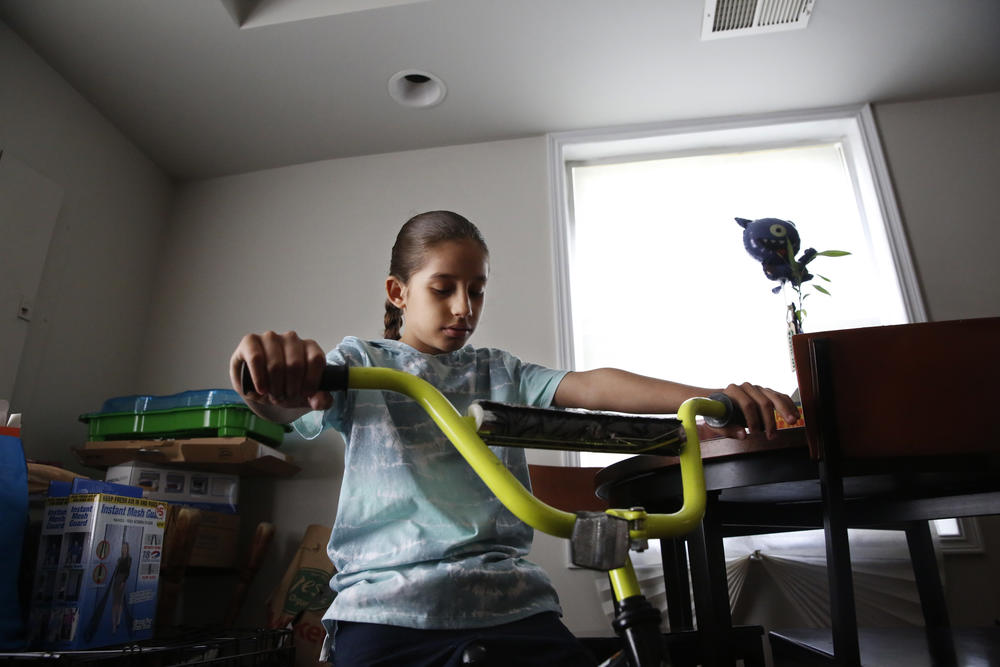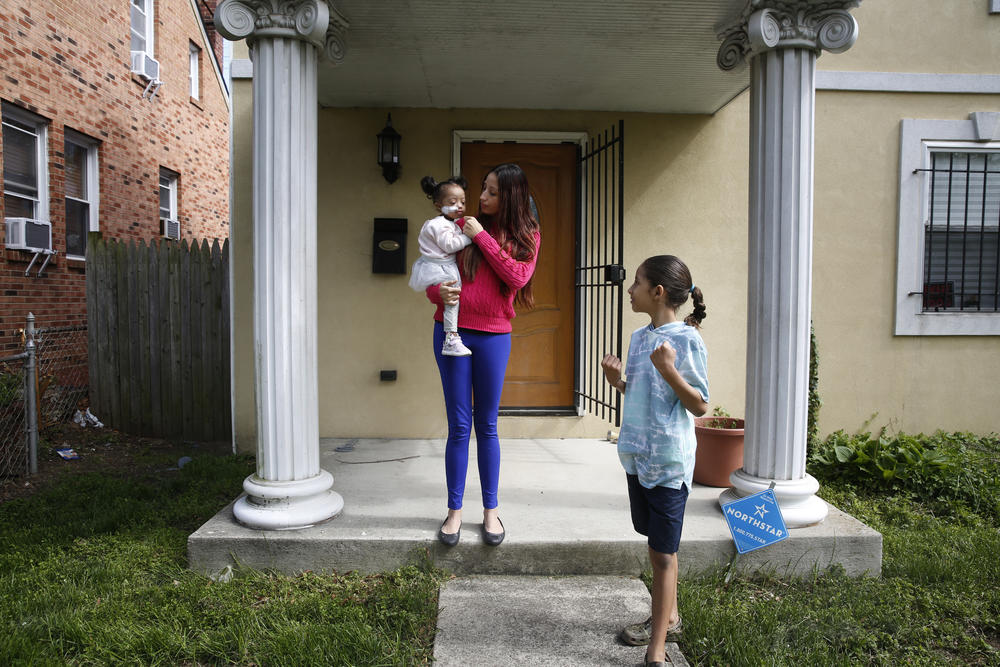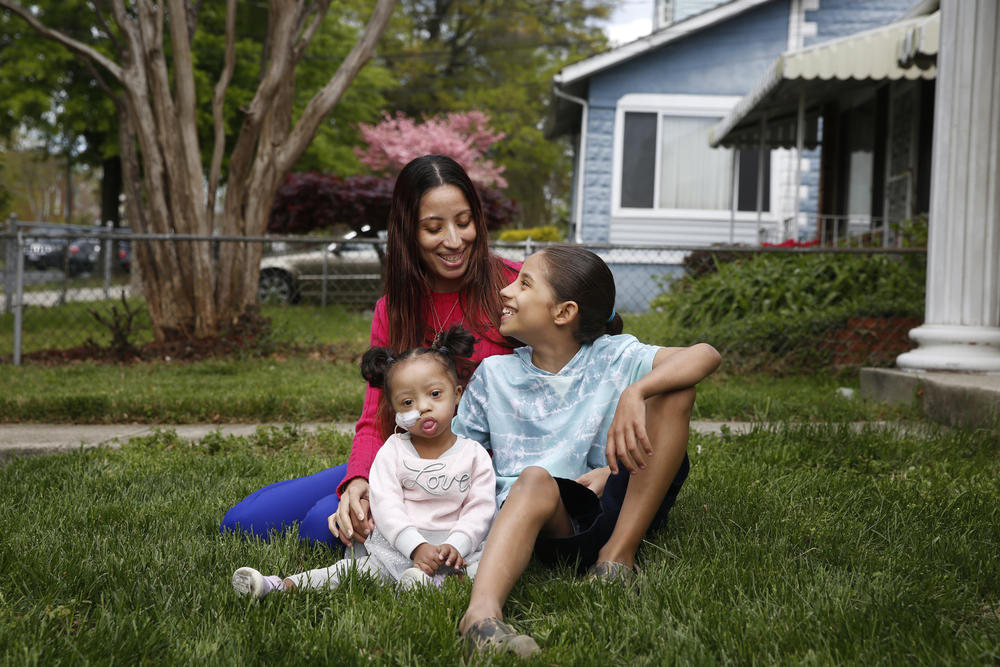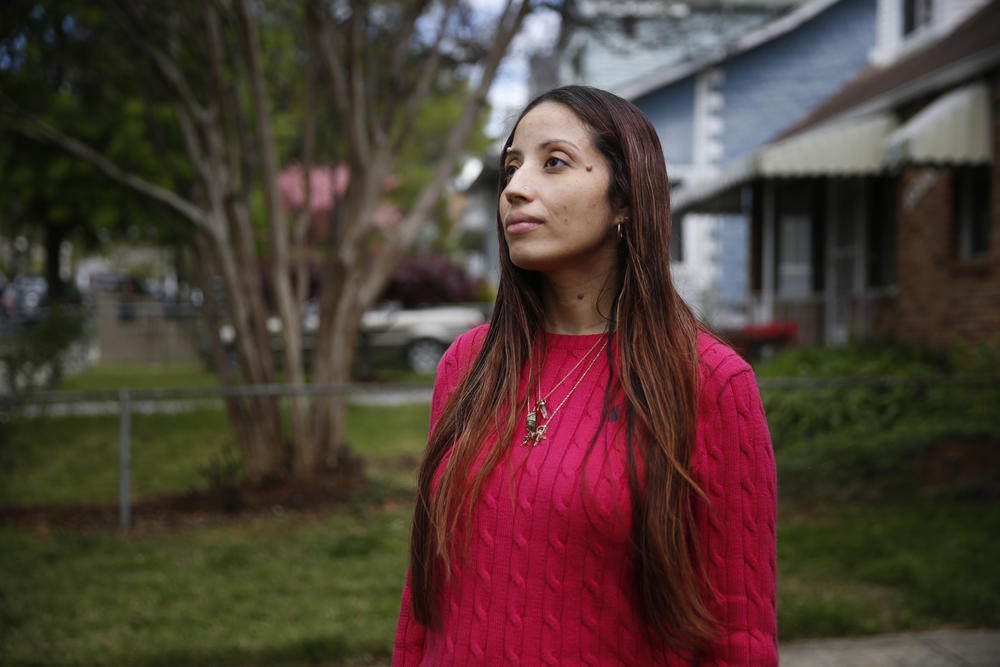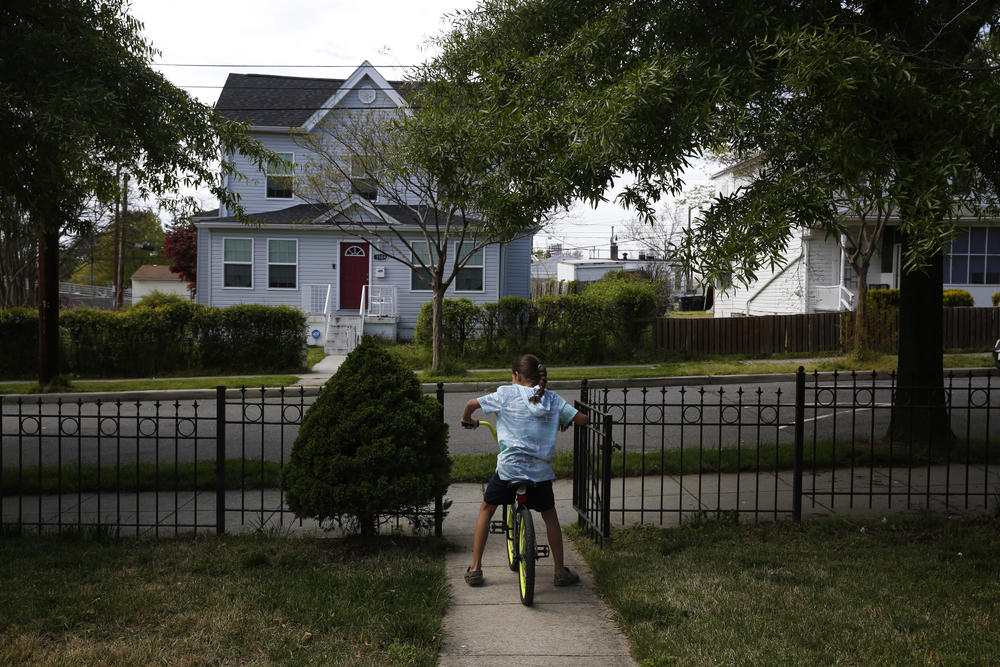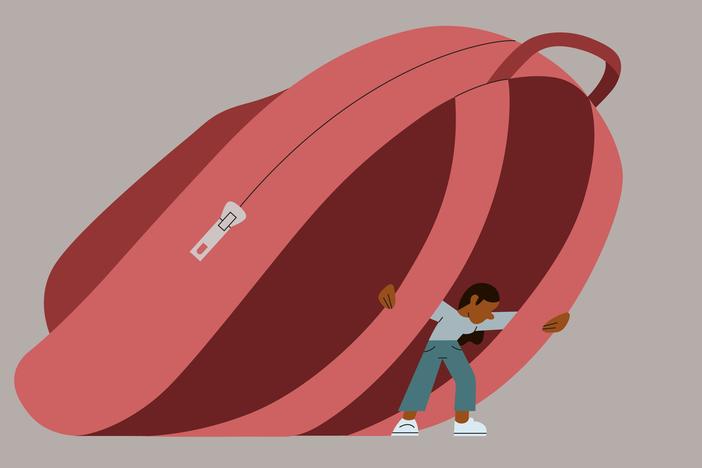Section Branding
Header Content
How Schools Can Help Kids Heal After A Year Of 'Crisis And Uncertainty'
Primary Content
Kai Humphrey, 9, has been learning from home for more than a year. He badly misses his Washington, D.C., elementary school, along with his friends and the bustle of the classroom.
"I will be the first person ever to have every single person in the world as my friend," he said on a recent Zoom call, his sandy brown hair hanging down to his shoulder blades. From Kai, this kind of proclamation doesn't feel like bragging, more like exuberant kindness.
But when Kai's school recently invited him back, he refused. That's because his worry list is long, topped by his fear of getting COVID-19 and giving it to his 2-year-old sister, Alaina. She was born with a heart condition, Down syndrome and a fragile immune system. To her, the disease poses a mortal threat, and he is her protector, the only one who can make her giggle breathlessly.
Kai also worries about being separated from his mom, Rashida Humphrey-Wall. His biological father died in 2014, and she remains his rock, his mama bear and occasional taekwondo partner. He sometimes visits her bedside, in the middle of the night, just to check on her.
This pandemic has been stressful for millions of children like Kai. Some have lost a loved one to COVID-19, and many families have lost jobs, their homes and even reliable access to food. If that stress isn't buffered by caring adults, it can have lifelong consequences.
"Kids have had extended exposure to chaos, crisis and uncertainty," says Matt Biel, a child psychiatrist at MedStar Georgetown University Hospital.
But there's some good news for kids like Kai: Educators across the country say their top priority right now isn't doubling down on math or reading — it's helping students manage all of this pandemic-driven stress.
"If kids don't return to school and get a lot of attention paid to security, safety, predictability and re-establishing of strong, secure relationships, [they] are not gonna be able to make up ground academically," Biel says.
Promoting mental wellness in the classroom
To reestablish relationships in the classroom — and help kids cope with the stress and trauma of the past year — mental health experts say educators can start by building in time every day, for every student, in every classroom to share their feelings and learn the basics of naming and managing their emotions. Think morning circle time or, for older students, homeroom.
At Hernandez Middle School in Chicago, teacher Lilian Sackett starts off each day by checking in with students, then diving into a short lesson on mindfulness and other social-emotional skills.
The school is in a predominantly Latino area that was hit hard by the pandemic, Sackett says. She teaches English as a second language, and she learned early on that many of her students' families were dealing with a lot of stress related to job losses and illness — that's on top of any trauma that may have predated the pandemic.
"We need to allow the students to share their experiences with the pandemic and to give them that safe space [to] talk about it," Sackett says.
What's more, she says, children can benefit a lot from just a few minutes each day of classwide calm. When she found out her students love Bob Ross and his tranquil, televised painting lessons from the 1980s and '90s, Sackett decided to work him into their morning routine.
"We watch five minutes of Bob Ross, and we watch the whole painting session within one week," she explains. "When they're having fun, they're so excited — they'll learn anything you throw at them."
Sackett says her approach was informed by a virtual training, provided by Ann & Robert H. Lurie Children's Hospital, that focused on the impacts of trauma on children.
"They mentioned a bad grade is never about a lazy kid," she says. If a child is struggling academically, they may be dealing with really tough circumstances at home. Sackett learned that teachers can help by creating a supportive environment that fosters resilience.
Sheyla Ramirez, an eighth-grader at Sackett's school, has benefited a lot from daily check-ins with her teacher. Last fall, her family came down with COVID-19, and her baby sister ended up hospitalized before she recovered. Sheyla's uncle had died after testing positive for the virus months earlier. She says it was a really stressful time, especially for her third-grade sister.
"My sister was like, 'Oh, I don't want to die,'" Sheyla remembers. "And it made me feel bad because it's just like... I didn't know what to tell her because I was in shock, too."
School staff routinely checked in to see if she or her family needed anything, and they offered to connect Sheyla with a school counselor. But Sheyla says the short daily lessons in mindfulness at the start of each school day — and being able to share her feelings and concerns with her teacher — were enough to help her get through.
"They've been doing an excellent job," says Sheyla's mom, Amparo Ramirez. "I've been telling them, 'I'm thankful for you being here.'"
When more serious help is needed
For many kids, a little morning circle time with a caring teacher, or an occasional chat with a school counselor is all they'll need. And the more schools invest in promoting mental health and equipping children with social-emotional skills, the fewer children will go on to develop more serious problems, says child psychiatrist Matt Biel.
But there will always be children who need more intensive interventions, which could involve school social workers and psychologists, when available, or a referral to a mental health professional beyond the school.
Kai has been talking regularly with a therapist through his elementary school. And he says she has helped him come up with strategies to manage his stress at home.
"I would go in my room, lay on my bed, and either watch TV or play with my toys or do something like that," Kai says. "And then I'll come back out when I'm more calm and happy."
As a solo parent, Kai's mom, Rashida Humphrey-Wall, has also had a tough year. She admits that looking after two kids, in addition to taking on a new job, during a pandemic has been stressful. "In the beginning I think I had depression, anxiety... anything you can think of, I probably had it."
Biel says that kind of stress can trickle down to children.
"All of the best evidence-based practices in the world are not going to have the desired effect if that child is living in a family that's overwhelmed by stress," he explains.
One of the best ways to address that is to also help caregivers, like Humphrey-Wall. And that's exactly what Kai's school has done. Through a partnership with Medstar Georgetown Center for Wellbeing in School Environments, Kai's school arranged for Humphrey-Wall to meet with a clinical psychologist once a week for what they call "parent wellbeing sessions."
Without it, she says, "I don't know what I would have done, really."
Partnerships between schools and mental health care providers can be expensive for districts and may not be an option in rural or under-resourced areas where there simply aren't enough child-focused services.
Biel says he's hopeful the rise in telehealth will help. But whatever the solution, he says schools need support as they explore their options.
"Schools can't beg, borrow and steal from what they already have to do this," Biel says. "We need to support schools and school systems with more resources to make this possible."
Federal help for schools
For districts that want to do more, the latest COVID-19 relief package could be a big help. The American Rescue Plan contains roughly $122 billion for K-12 schools, some of which can be used to hire more counselors, social workers and psychologists. And one U.S. senator has been pushing the Biden administration to emphasize mental health as it guides districts on how to spend that money.
"Not all schools and districts are equipped to work on these complex mental and behavioral health issues and meet the unique needs of today's students," Sen. Catherine Cortez Masto wrote in a letter to the secretaries of the U.S. Departments of Education and Health and Human Services. "Many suffer from drastic shortages of counselors, social workers, and psychologists to work with students even under normal circumstances. They will need robust assistance from community-based service providers and the health care community."
Cortez Masto says a recent spate of student suicides in one county in her state, Nevada, underscores just how urgent the needs are.
"This is a unique situation we're in, hopefully a once-in-a-lifetime pandemic," she tells NPR. "We don't know the impact it's going to have long-term [on] our kids. But we know the short-term. I've seen it here in southern Nevada and its devastating consequence here. So we've got to change that dynamic."
In the U.S., where access to health care — especially for children's mental health — is inequitable and inconsistent, the difficult work of identifying and tending to the mental and emotional health of this pandemic generation will fall largely on the shoulders of educators.
Programs like the one at Kai's school, in Washington, D.C., could play a critical role in helping to change that dynamic. Cortez Masto hopes the flood of federal relief dollars will help other districts create similar partnerships with child mental health providers, or find other solutions.
In the meantime, Kai and his mom are trying to figure out when Kai will return to in-person school. Humphrey-Wall thinks it would be good for her son to get out of the house, but Kai still fears bringing COVID-19 home. He's talking it through with his school-based therapist, doing his best to give those worries a roundhouse kick:
"We all need to be free from this quarantine. I'm going crazy. I want to be free!" Kai shouts. He's eager to get back to the business of making friends with the entire world.
If you or someone you know may be considering suicide, contact the National Suicide Prevention Lifeline at 1-800-273-8255 (en español: 1-888-628-9454; deaf and hard of hearing: dial 711, then 1-800-273-8255) or the Crisis Text Line by texting HOME to 741741.
This story is part of a reporting partnership that includes NPR, Illinois Public Media and Kaiser Health News.
Copyright 2021 NPR. To see more, visit https://www.npr.org.
Bottom Content

